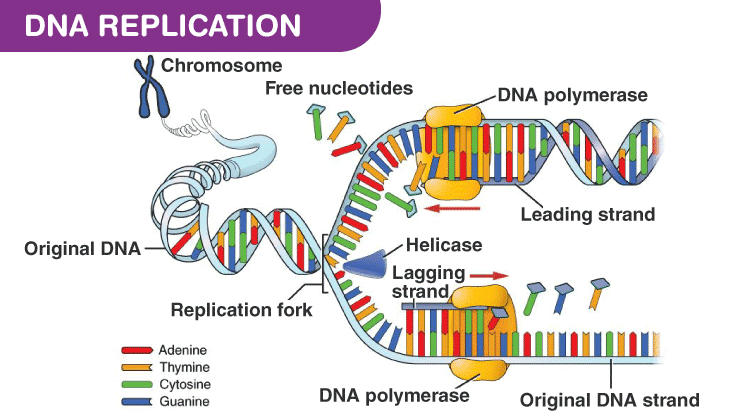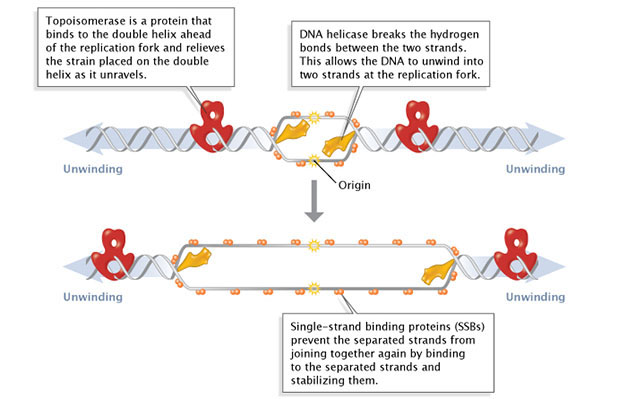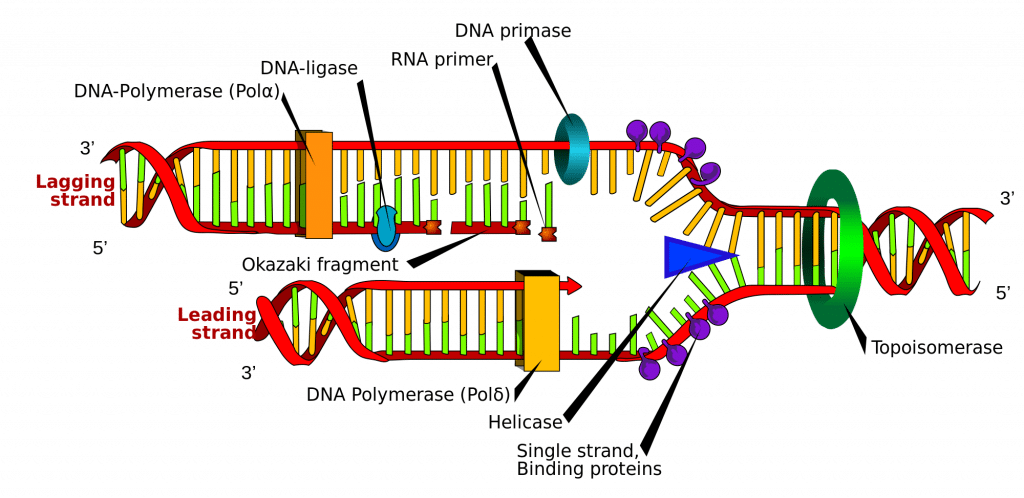DNA replication likes one direction. Progression through checkpoints is controlled through complex i.

What Are The Steps Of Dna Replication
The process of replication is fairly quick occuring at 50 nucleotides per second in human DNA thanks to multiple polymerases that can synthesize at the same time.

. DNA replication commences at specific locations in the genome called origins The DNA unwinds at the origin to form a replication fork. In other words one strand always runs in the 5 to 3 direction and another always runs in the. Likewise why does DNA synthesis only proceed in the 5 to 3 direction.
The enzymes involved in the process of DNA replication are as follows. Click to see full answer. The simplest way one can imagine to perform reverse 3-5.
This is called the leading strand. DNA replication is the process by which a cell makes an identical copy of its DNA. Primers are generated by the enzyme DNA primase.
This exposes complementary bases on another strand. Any alternative polymerase mechanism needs to account for the source of the energy required for adding a nucleotide. DNA Replication begins at the Origin of Replication.
This copying process always happens in a forward direction from the 5 to the 3 end. Directionality of DNA is 5 to 3. These are the enzymes that can break and reseal one strand of DNA.
These are special unwinding enzymes that help in breaking the weak hydrogen bonds which hold the two strands together. Primase synthesizes an RNA primer to initiate synthesis by DNA polymerase which can add nucleotides in only one direction. This naming is based on the naming of positions of carbon atoms that bind nucleotide bases together.
The DNA is opened with enzymes resulting in the formation of the replication fork. This has to happen because DNA polymerase can only synthesize DNA. The primer always binds as the starting point for replication.
What direction does DNA polymerase work in. Within eukaryotes DNA replication is controlled within the context of the cell cycle. DNA synthesis does not proceed in both directions.
Not the boy band but rather it prefers to replicate in a certain direction over the other. This means while one strand of the original template DNA is replicated the other is being replicated as well. The leading strand is the simplest to replicate.
Ended strand in a 5 to 3 direction. DNA replication likes one direction. As the cell grows and divides it progresses through stages in the cell cycle.
To replicate DNA and RNA nucleotide chains new copies are synthesized from existing ones. DNA replication takes place during the S phase synthesis phase. Publishing their findings in Science Advances scientists have discovered an enzyme that can perform the procedure in the opposite direction and characterized how it works - a complex process.
It is always anti-parallel for a DNA double helix to form. These fragments are processed by the replication machinery to. DNA polymerases can only create DNA in the 5 to 3 orientation which creates an issue during DNA replication when the DNA is replicated.
DNA Replication Enzymes. The whole process occurs in the nucleus and is 1000 times faster than RNA transcription. Cellular proof-reading and error-checking mechanisms ensure nearly perfect fidelity of the DNA copies.
DNA replication can proceed in only one direction from the top of the DNA strand to the bottom. DNA is only synthesized in the 5 to 3 direction never the 3 to 5 direction. In order to fit within a cells nucleus DNA is packed into tightly coiled structures called chromatin which loosens prior to replication allowing the cell replication machinery to access the DNA strands.
Once the DNA strands have been separated a short piece of RNA called a primer binds to the 3 end of the strand. Holds strands together to keep them from. The progress of the eukaryotic cell through the cycle is controlled by cell cycle checkpoints.
DNA replications needs a source of energy to proceed this energy is gained by cleaving the 5-triphosphate of the nucleotide that is added to the existing DNA chain. One strand is synthesized continuously in the direction of the replication fork. This enzyme helps in the.
Unwinds one strand from a double helix to expose its nucleotide bases. DNA replication Stage one. The video below explains the typical.

Dna Replication Steps Rules Dna Polymerase Enzymes Rna Primer Synthesis Science Online

Molecular Events Of Dna Replication Learn Science At Scitable

Dna Replication Structure Stages Of Replication Teachmephyiology
0 Comments